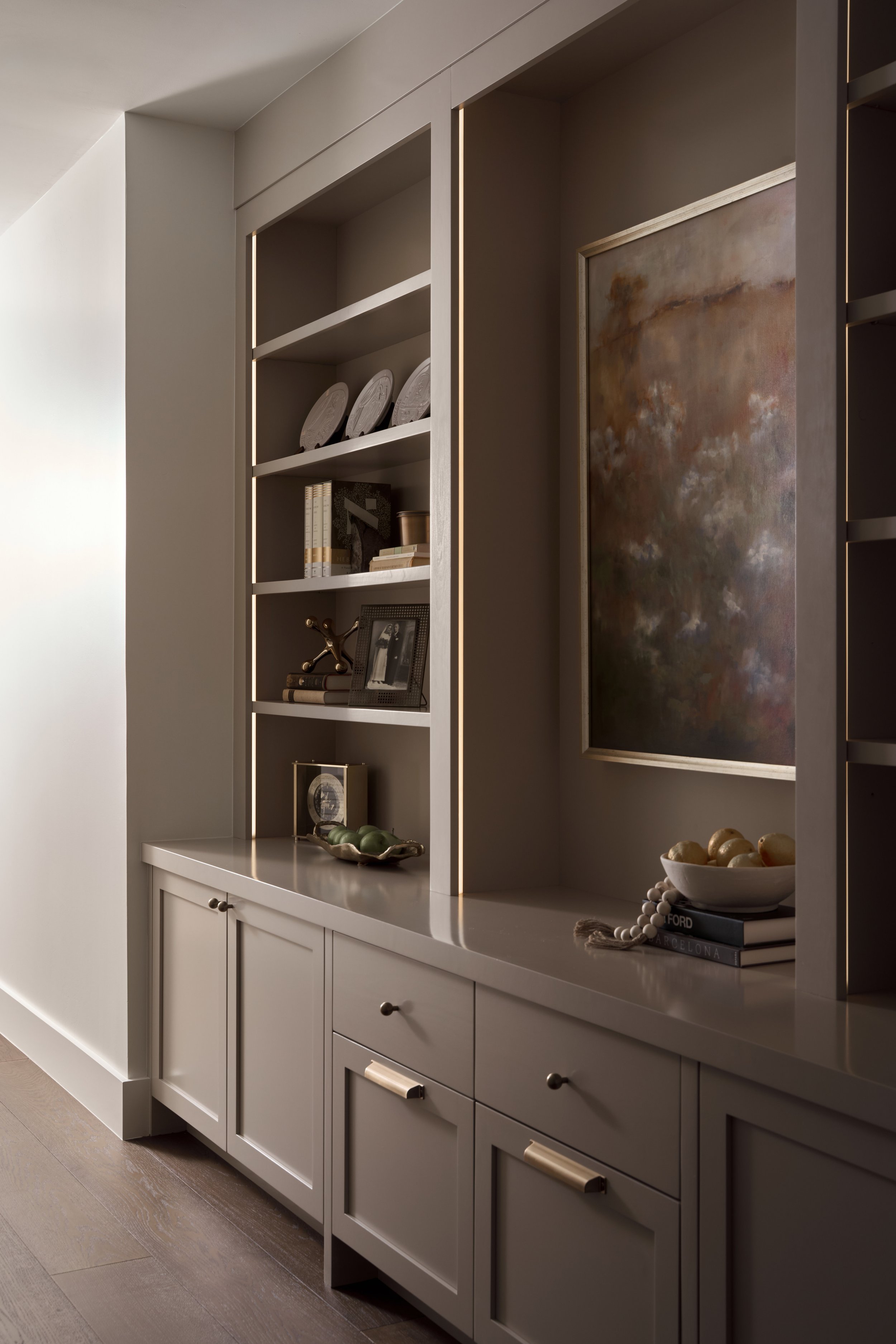How to Photograph Small Spaces: A Guide for Interior Design Photographers
Photographing small spaces presents unique challenges but also offers great opportunities for creativity. Here are some expert tips for interior design photographers to help you make the most of small spaces.
1. Get Back as Far as You Can
In small spaces, every inch matters. To minimize wide-angle distortion, try to maximize the distance between you and the subject. Even an inch or two can make a significant difference.
(To learn more about wide-angle distortion, check out this blog.)
Use the door frame as the limit: By stepping outside the door frame and zooming in until the door frame is just barely out of the image, you can maximize the distance between your camera and the subject.
Lean the tripod back into the corner: Positioning your camera in the corner can also give you a few extra inches of space. Having a flip-out screen or tethering software like Camranger or Capture One can be very helpful here, as it lets you adjust without needing to be behind the camera..
Use a mini tripod: In tight spots, a mini tripod can help you get farther back. Placing it on a table or bookshelf allows you to distance the camera further from the subject.
Please ignore me and focus on the tripod. I folded out the legs (of the tripod) to allow me to get my camera as far back as possible for this image. If I had been even a foot further forward the nightstand and lamp would have become distorted.
If I had gone any wider on this image you would have seen the door frame on either side of the image.
2. Focus on the Foreground Elements
The foreground can dramatically impact the composition of your shot. In small spaces, it’s especially important to be mindful of how foreground elements influence the overall image.
Watch for exaggerated elements in the corners: Furniture or decor near the edge of the frame can appear out of proportion in small spaces. Keep these elements balanced so they don’t distract from the rest of the room.
Use shadow or depth of field to minimize foreground distractions: A shallow depth of field (e.g., f/2.8) can help blur distracting foreground objects, allowing the focus to remain on the more important design features. Alternatively, you can use shadows creatively to guide the viewer’s eye away from the foreground and into the scene.
Move any unnecessary decor from the foreground: Extra items in the scene can make small spaces feel cramped. Remove unnecessary decor from the foreground to keep the shot clean and open.
Finding a creative angle allowed me to showcase this small bathroom while still having a visually appealing image.
In this small hallway choosing to not fully show the right side of the bookshelf made this a much more appealing image and free of wide-angle distortion.
3. Get Creative and Focus on the Details
When photographing small spaces, you don’t always need to show the entire room. Focus on highlighting specific design features and smaller details instead.
Less is more: Focus on design features like a textured rug, statement art, or unique furniture pieces. Close-ups of these elements can create intimate and compelling images that tell the story of the room without overwhelming the viewer.
Don’t feel like you always need to show the entire space: Small rooms often look more interesting when you focus on specific areas or details. You don’t need to capture the whole room to evoke its atmosphere—sometimes a well-composed shot can speak volumes.
Here is an example of where some of these tips could have been helpful.
1: If the photographer had been able to back out of the door and shoot with a less wide angle the sink would not have been nearly as distorted.
2: Removing the towel would create fewer foreground distractions.
3: Showing less of the room in general. If we saw less shower on the left and less sink on the right we would still be able to understand the room but would have less distracting distortion.
Final Thoughts
Photographing small spaces requires creativity and a keen eye for detail. By maximizing your angles, managing foreground elements, and focusing on key design features, you can create stunning images that accentuate the best elements of the space.
As an interior design and Hospitality photographer, mastering these techniques will elevate your portfolio and help you deliver high-quality images for interior design publications, real estate listings, or Hospitality projects. Don’t be afraid to get creative—sometimes, the smallest spaces have the most potential to shine!
Want to learn more? Check out my other blogs here!
Feel free to ask any questions below and i’ll be sure to reply!





